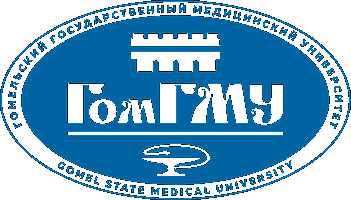| dc.contributor.author | Мицура, Е. Ф. | |
| dc.contributor.author | Новикова, И. А. | |
| dc.contributor.author | Петренко, Т. С. | |
| dc.contributor.author | Макеева, К. С. | |
| dc.contributor.author | Волкова, Л. И. | |
| dc.date.accessioned | 2021-05-03T08:25:42Z | |
| dc.date.available | 2021-05-03T08:25:42Z | |
| dc.date.issued | 2021 | |
| dc.identifier.citation | Оценка состояния про/антиоксидантной системы у детей с наследственным сфероцитозом / Е. Ф. Мицура [и др.] // Проблемы здоровья и экологии. – 2021. – Т. 18, № 1. – С. 55-61. | ru_RU |
| dc.identifier.uri | http://elib.gsmu.by/handle/GomSMU/8307 | |
| dc.description.abstract | Цель исследования: оценить состояние про/антиоксидантной системы у детей с наследственным сфероцитозом (НС) в зависимости от его тяжести.
Материал и методы. Обследовано 44 пациента с НС в возрасте от 1 до 17 лет, которые разделены на 2 группы в зависимости от тяжести заболевания: легкое течение (n = 24) и среднетяжелое или тяжелое течение (n = 20). В контрольную группу вошли 23 практически здоровых ребенка, которые были сопоставимы с основной группой по полу и возрасту. Проведена оценка состояния про/антиоксидантного баланса плазмы крови методом люминолзависимой хемилюминесценции (ЛЗХЛ) с определением максимальной интенсивности свечения (Imax, %) и светосуммы хемилюминесценции (S, %). В эритроцитах исследованных детей определяли активность супероксиддисмутазы (СОД) и каталазы. Результаты. В среднем у пациентов с НС параметры про/антиоксидантного статуса значимо отличались от контрольной группы (р < 0,05), что соответствует умеренно выраженному оксидативному стрессу. Активность СОД и каталазы в эритроцитах пациентов по сравнению с группой контроля была выше (р = 0,0001 и р < 0,0001 соответственно). При сравнении выраженности оксидативного стресса в зависимости от тяжести НС установлено, что степень нарушений оказалась более выраженной у пациентов со средним и тяжелым течением заболевания (р < 0,05).
Заключение. У пациентов с НС имеется оксидативный стресс (снижение активности антиоксидантной системы на фоне повышенного накопления веществ с прооксидантной активностью), степень которого выше у пациентов с тяжелым течением заболевания. Это позволяет рассматривать показатели ЛЗХЛ плазмы как дополнительный маркер оценки тяжести заболевания и обоснования необходимости включения антиоксидантов в схему лечения НС. | ru_RU |
| dc.description.abstract | Objective: to assess the state of the pro-oxidant/antioxidant system in children with hereditary spherocytosis (HS) depending on its severity.
Material and methods. The study involved 44 HS patients at the age from 1 to 17 who were divided into 2 groups depending on the disease severity: mild course (n = 24) and moderate or severe course (n = 20). The control group included 23 practically healthy children who were comparable with the main group by gender and age. The state of the prooxidant/antioxidant balance of blood plasma was assessed by the method of luminol-dependent chemiluminescence (LDCL) with the determination of the maximum luminescence intensity (Imax, %) and the light sum of chemiluminescence (S, %). The activity of superoxide dismutase (SOD) and catalase was determined in the erythrocytes of the examined children.
Results. On average, the parameters of the pro-oxidant/antioxidant status in the HS patients significantly differed from those of the control group (p <0.05), which corresponded to moderately pronounced oxidative stress. The activity of SOD and catalase in the erythrocytes of the patients was higher as compared with that of the control group (p = 0.0001 and p <0.0001, respectively). The comparison of the severity of oxidative stress depending on HS severity has determined that the degree of stress was more pronounced in patients with moderate or severe course of the disease (p <0.05).
Conclusion. HS patients develop oxidative stress (decreased activity of the antioxidant system associated with increased accumulation of prooxidant substances), the degree of which is higher in patients with a severe course of the disease. This allows of considering plasma LDCL indicators as an additional marker for the assessment of the severity of the disease and of justifying the necessity to include antioxidants in the HS treatment regimen. | |
| dc.language.iso | ru | ru_RU |
| dc.publisher | ГомГМУ | ru_RU |
| dc.subject | оксидативный стресс | ru_RU |
| dc.subject | oxidative stress | ru_RU |
| dc.subject | children | ru_RU |
| dc.subject | hereditary spherocytosis | ru_RU |
| dc.subject | дети | ru_RU |
| dc.subject | наследственный сфероцитоз | ru_RU |
| dc.title | Оценка состояния про/антиоксидантной системы у детей с наследственным сфероцитозом | ru_RU |
| dc.type | Article | ru_RU |
| dc.identifier.doi | https://doi.org/10.51523/2708-6011.2021-18-1-8 | |
